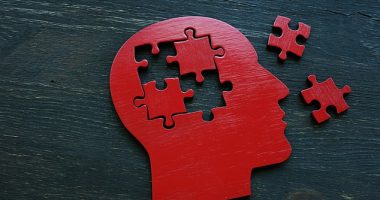In a space where music by Black and Brown artists and Black and Brown bodies (i.e. big butts) are loved and coveted, it becomes a challenge when we ourselves are not welcome.
Boutique fitness spaces, in particular, are filled with mostly white faces. Whenever I take a fitness class, the first thing I do is look for other people with black or brown skin. About seven times out of ten, I’m the only one. When you spend so much time in a place where you are othered, you adopt certain behaviors—like scanning for faces in the crowd that look like yours—to make you feel safe.
Experts In This Article
Recently, I read the book Who Is Wellness For? An Examination of Wellness Culture and Who It Leaves Behind by Fariha Róisín. There was a quote in it that made me think about the role I play in the wellness space.
Róisín writes: “It deeply concerns me that whiteness and capitalism have co-opted wellness, relegating caring for oneself as a privilege when wellness should be for all. Instead, the accouterments, gadgets, and clothes (primarily created by white people for other white people while completely stealing other people’s culture) have sustained inequality for the masses.”
With that in mind, let’s dive into how and why wellness excludes Black and Brown communities, and what the fitness industry can do to change it.
1. Lack of representation
Take a look at the Instagram account of any major boutique fitness studio and also in the classes you attend. What faces do you see staring back at you? They’re probably majority white.
Now imagine being a member of the BIPOC community and looking for a place to start your fitness journey. You don’t see anyone that looks like you, so you don’t think it’s for you, and you don’t join. Ultimately, this could derail you from reaching your goals.
Why does this matter? Because conditions like diabetes, obesity, and hypertension are higher in our communities.
“The lack of diverse representation in the fitness space affects the health and well-being of Black and Brown folks,” says Jonelle Lewis, E-RYT 500, yoga teacher and co-owner of Empowered Yoga. “This group has documented worse health outcomes, and if we aren’t seeing ourselves represented in health, fitness, and well-being spaces, we are less inclined to think those spaces are for us. If we don’t feel welcomed or that we belong, poor health outcomes will keep perpetuating in Black and Brown communities.”
This has been proven to me, as I’ve specifically been told by clients that they quit a studio because when the coaches of color in their preferred time slot left, they didn’t feel like they belonged anymore. It was no longer a safe space for them.
2. Colonization of practices
When you think of yoga, what’s the first thing that comes to mind? If you’re like me, it’s not the cultural Indian practice, but a thin white woman doing poses in a matching workout set in a 100-degree room. Yes, it’s a stereotype, but it’s also the image we’ve been conditioned to see.
Yoga is a practice that’s been colonized by white people and the Indian culture has been completely removed. In fact, according to a 2021 survey by the Pew Research Center, most Indians, including Hindus, don’t practice yoga.
“We see these communities being exploited,” Lewis says. “Black and Brown spiritual healing, movement, and mindfulness practices have been appropriated time and time again—and practitioners are very rarely monetarily compensated for their creativity and innovation.”
“If we don’t take time to move out of our comfort zones and ask the hard questions, we won’t be able to have an industry that is diverse and really invites everyone to be healthy and well.” —Jonelle Lewis, E-RYT 500
3. High cost of entry
Let’s be honest, the cost of fitness is high—especially in boutique fitness.
“Fitness is an expensive endeavor,” says Suzie Sang, PhD, research associate at the Max De Pree Center for Leadership. “It takes real cash to invest in a gym membership or a personal trainer. When people have to make a choice between food and gym memberships, they choose the former.”
What I often hear in fitness spaces, and admittedly have even said when selling memberships, is that fitness is a long-term investment, and though the cost is high up front, it’ll save you in doctor bills down the road.
While in some cases that may be true, it’s an extremely elitist way of looking at things. When basic household needs aren’t being met, things like a gym membership are not a priority.
4. Little access to fitness spaces
If you look up fitness studios in Black and Brown communities, you don’t usually find as many as in the affluent areas.
“There aren’t many opportunities for fitness in marginalized communities, for example gyms and exercise classes,” Sang says. “If there are there, they may not be well equipped or they close because it may not be profitable. You’ll find more liquor stores in Black communities versus grocery stores and gyms.”
Lewis agrees.
“Black and Brown folks have been systematically excluded and disenfranchised in society in general, and this spills over into every industry, including fitness, health, and well-being,” she says. “It’s harder for us to raise capital and investments for their businesses, and we aren’t readily supported or given resources as easily or frequently as our white counterparts.”
It’s not just gyms and fitness studios that aren’t present, it’s also other free spaces for activity, like public parks.
A 2016 study in the Journal of Urban Health found that in low-income communities, though there were parks, there was very little access to organized activities, which could have been due to the lack of staff or resources. In higher-income communities, the researchers observed a lot more activities going on, which may have been in part because the cost was able to be covered by participant fees.
What can we do to change things?
We can’t change the fitness and wellness space without having the necessary dialogue around inclusivity and diversity—and the people involved in these conversations need to be a part of the BIPOC community. What is missing for them, and what do they need to feel seen and safe?
Sang believes it’s going to take well established fitness brands to make a move for others to follow.
“Risks need to be taken by big fitness companies to invest in communities that have zero resources and limited access,” she says. “In order to do that, there may have to be some subsidizing as an investment, not tokenizing, so that the overall well-being of more communities can be realized.”
Though Empowered Yoga is currently at a smaller scale, Lewis isn’t waiting around and is becoming the change the industry needs.
“We celebrate and amplify the work of our teachers—meaningful representation matters,” Lewis says. “We also invest in staff training to make sure everyone in our space understands what it takes for all attendees to feel represented and valued. If we don’t take time to move out of our comfort zones and ask the hard questions, we won’t be able to have an industry that is diverse and really invites everyone to be healthy and well.”
Well+Good articles reference scientific, reliable, recent, robust studies to back up the information we share. You can trust us along your wellness journey.
- Cohen DA, Hunter G, Williamson S, Dubowitz T. Are Food Deserts Also Play Deserts? J Urban Health. 2016 Apr;93(2):235-43. doi: 10.1007/s11524-015-0024-7. PMID: 27033184; PMCID: PMC4835352.
Our editors independently select these products. Making a purchase through our links may earn Well+Good a commission.
Source: Well and Good








